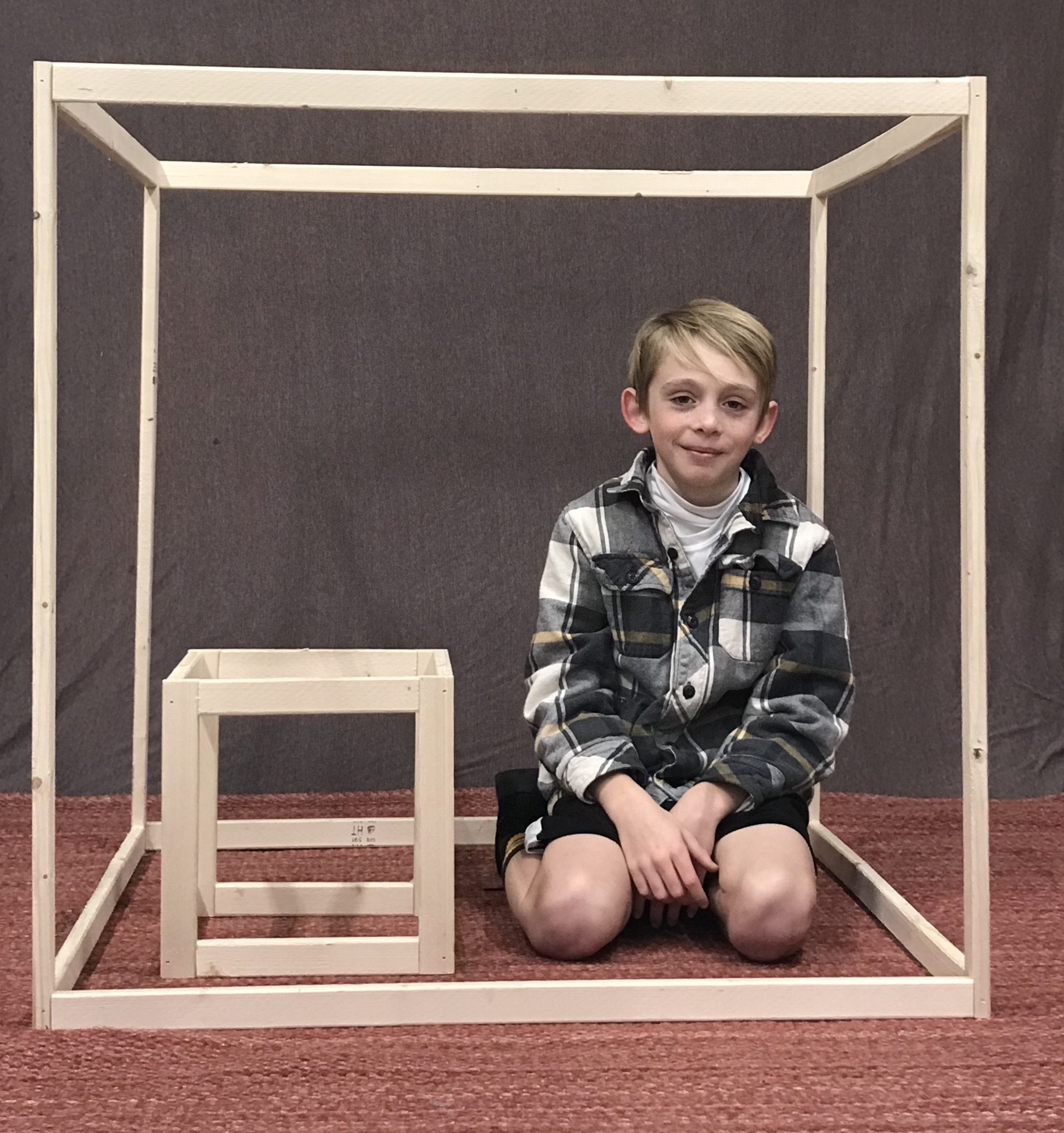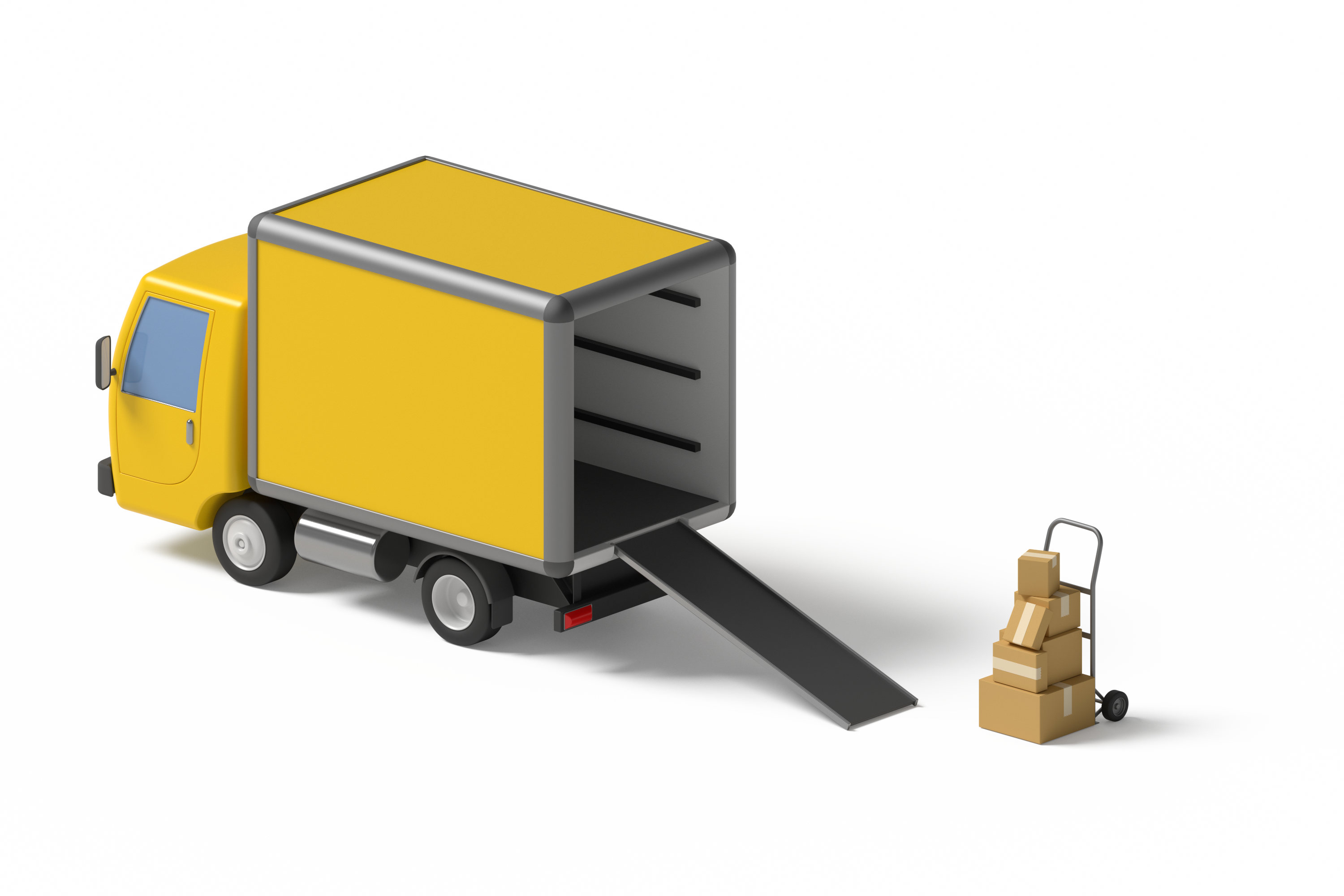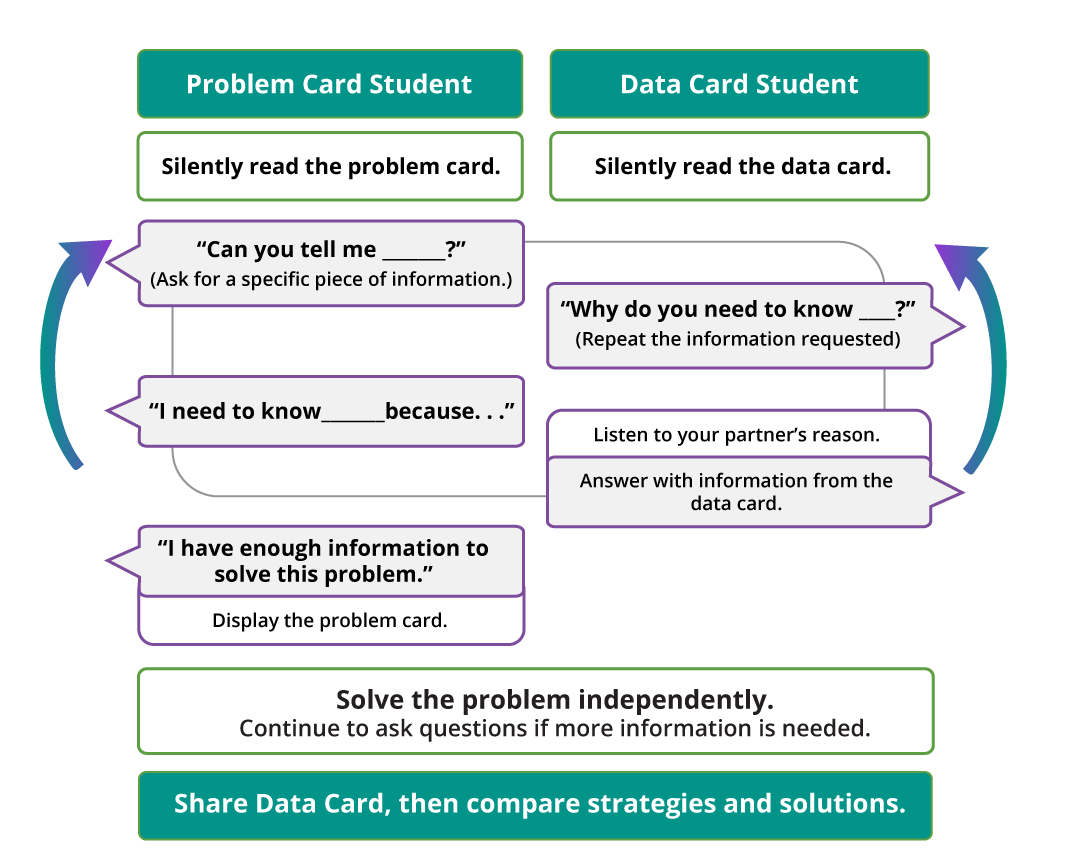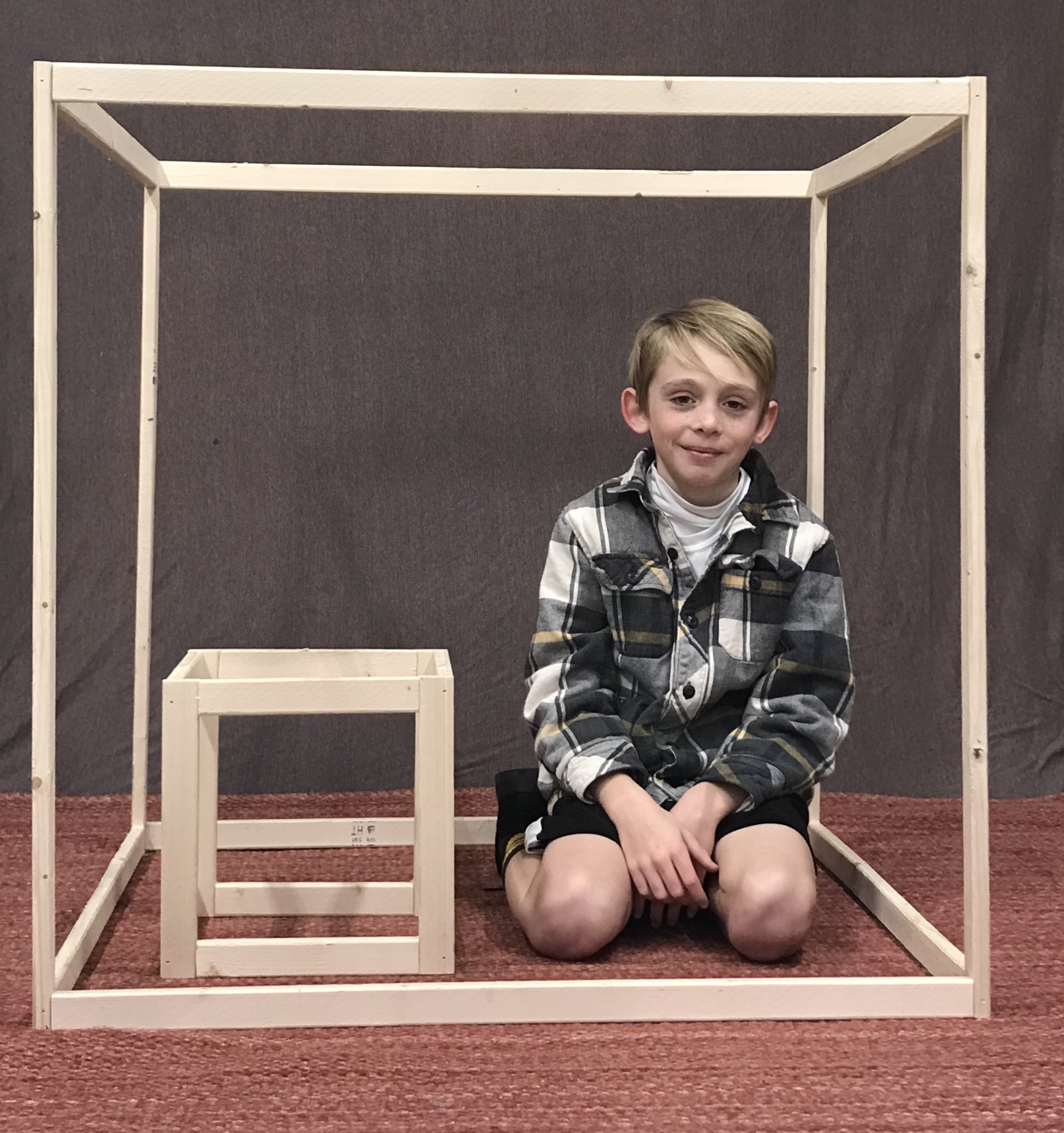Lesson 7
Cubic Units of Measure
Warm-up: Notice and Wonder: Two Prisms (10 minutes)
Narrative
Launch
- Groups of 2
- Display the image.
- “What do you notice? What do you wonder?”
Activity
- 1 minute: quiet think time
- 1 minute: partner discussion
- Share and record responses.
Student Facing
What do you notice? What do you wonder?

Student Response
For access, consult one of our IM Certified Partners.
Activity Synthesis
- “The little cube represents a cubic foot. The big cube represents a cubic yard. About how many of the big cubes could we fit in our classroom?” (Answers vary. If time permits, measure the lengths and widths of the classroom, round them to the nearest yard, and check the reasonableness of the estimates.)
- “We have been using cubic units to measure volume, but haven’t defined the size of the unit. The choice of the unit depends on the size of the object.”
Activity 1: What are the Units? (10 minutes)
Narrative
The purpose of this activity is for students to consider how the size of an object impacts the unit we use to measure the volume of that object. Since this is the students’ first experience with these cubic units of measure, it may be helpful for them to see the actual length of a centimeter, inch and foot. Have rulers or cubes available to provide extra support to visualize the size of the cubic units of measure. Because there are no mathematically correct or incorrect answers, this activity provides a rich opportunity for students to discuss and defend different points of view (MP3).
The launch of the activity is an opportunity for students to share their experiences and ask questions about the objects to ensure each student has access to the context. If it is helpful, display images of the items for students to reference.
Required Materials
Materials to Gather
Launch
- Groups of 2
- Write the list of objects (moving truck, freezer, etc…) on a display for all students to see.
- “Take a minute to read this list. What do you know about these objects? What do you wonder?”
- 3 minutes: partner discussion
- Share a few responses.
- Display the image from the warm-up.
- “In this activity we are going to consider using different cubic units of measure to find the volume of different sized objects. There is no right or wrong answer in these questions, but be prepared to explain your choice.”
- Give students access to rulers and yardsticks.
Activity
- 2 minutes: independent work time
- 5 minutes: partner discussion
- As students work, monitor for students who discuss how big or small the object is when choosing the size of the unit of measure. Ask these students to share during the synthesis.
- If students finish early, ask them to find other objects they would measure the volume of using the different cubic units of measure. If the objects are in the room, they could estimate and check their estimates.
Student Facing
For each object, choose the cubic unit you would use to measure the volume: cubic centimeter, cubic inch, or cubic foot.
| object | unit you would use |
|---|---|
| the volume of a moving truck | |
| the volume of a freezer | |
| the volume of a juice box | |
| the volume of a classroom | |
| the volume of a dumpster | |
| the volume of a lunch box |

Student Response
For access, consult one of our IM Certified Partners.
Activity Synthesis
- “How did you decide which units made sense?” (I tried to pick a unit that was not much smaller or much larger than the object being measured.)
- “What if I only wrote 24 as the volume for the freezer? What questions would you have?” (I would wonder 24 what? If we don’t know the unit of measure, we don’t know how big the freezer actually is.)
- Display: 24 cubic centimeters, 24 cubic inches, 24 cubic yards
- “What is the same about these measurements?” (They are all 24 units. They are all cubic units.)
- “What is different about these measurements?” (They are different sizes. Cubic centimeters and cubic inches are a lot smaller than cubic yards.)
Activity 2: Info Gap: Sizing Up Cubic Units (25 minutes)
Narrative
This Info Gap activity gives students an opportunity to determine and request information needed to measure the volume of rectangular prisms using different sized units.
The Info Gap routine requires students to make sense of problems by determining what information is necessary and then ask for information they need to solve them. This may take several rounds of discussion if their first requests do not yield the information they need (MP1). It also allows them to refine the language they use and ask increasingly more precise questions until they get the information they need (MP6). Since this is students’ first experience with the Info Gap routine, the Launch provides an opportunity to rehearse the routine together.
Supports accessibility for: Language, Conceptual Processing
Required Materials
Materials to Copy
- Info Gap Volume Cards
Launch
- Groups of 2
- Display Sample Problem Card from student workbook.
- “This is a diagram of a freezer. What is the volume of the freezer?”

- Read the problem aloud.
- Listen for and clarify any questions about the context.
- “Some of the information you need to solve this problem is missing, and I have it here. With your partner, decide what information you need to solve the problem, and create a list of questions you can ask to find out.”
- 1–2 minutes: quiet think time
- 2–3 minutes: partner discussion
- Invite students to share 1 question at a time.
- Record each question on a display, and respond with, “Why do you need to know _____ [restate the information requested]?” Students should provide a justification for how they will use the information before the information is revealed. For example, if students ask: “What is the width of the freezer?”, respond with, “Why do you need to know the width of the freezer?”
- Answer questions using only information stated on the Sample Data Card below (do not reveal):
- The width of the freezer is 2 feet.
- The length of the freezer is 4 feet.
- Record information that is shared on the display. Give students time to decide whether they have enough information to solve the problem.
- Repeat until students decide they have enough information to solve.
- 2–4 minutes: independent work time
Activity
- In each group, distribute a problem card to one student and a data card to the other student.
- After you review their work on the first problem, give them the cards for a second problem and instruct them to switch roles.
Student Facing

Problem 1:
- Partner A has the problem card.
- Partner B has the data card.
Problem 2:
- Partner B has the problem card.
- Partner A has the data card.
Your teacher will give you either a problem card or a data card. Do not show or read your card to your partner.

Pause here so your teacher can review your work. Ask your teacher for a new set of cards and repeat the activity, trading roles with your partner.
Student Response
For access, consult one of our IM Certified Partners.
Activity Synthesis
- Share the correct answers, including the units, and ask students to discuss the process of solving the problems.
- “What questions did you ask to help you find the volume?” (What is the height of the dumpster? How much space does Jada have in her backpack?)
- “What units were used for each problem? Did those units make sense?” (Cubic feet and cubic centimeters. Yes because a dumpster is big and a juice box is relatively small.)
Lesson Synthesis
Lesson Synthesis
Display image from notice/wonder.

Write the words cubic inches, cubic feet, cubic yards for all to see.
“Today we worked with these different sized cubic units. Turn and talk with your partner and try to think of an object for which you would use each unit of measure to find the volume.”
Partner discussion
“Now, pick one of the things you discussed and explain to your partner how you would find the volume of that object.” (I would multiply the area of a base by the corresponding height or I would multiply all three side lengths.)
Cool-down: Find the Volume (5 minutes)
Cool-Down
For access, consult one of our IM Certified Partners.
Student Section Summary
Student Facing
We find the volume of a right rectangular prism by multiplying the side lengths or by multiplying the area of a base by the corresponding height.

\(4 \times (5 \times 3)\)
\((4 \times 5) \times 3\)
\(15 \times 4\)
Each of these expressions represents the volume of this prism. The volume of this rectangular prism is 60 cubic units.
We can use different sized cubic units to measure the volume of different sized objects.
In this section, we used cubic inches, cubic feet, cubic yards, and cubic centimeters.